Search results
83 results found.
83 results found.
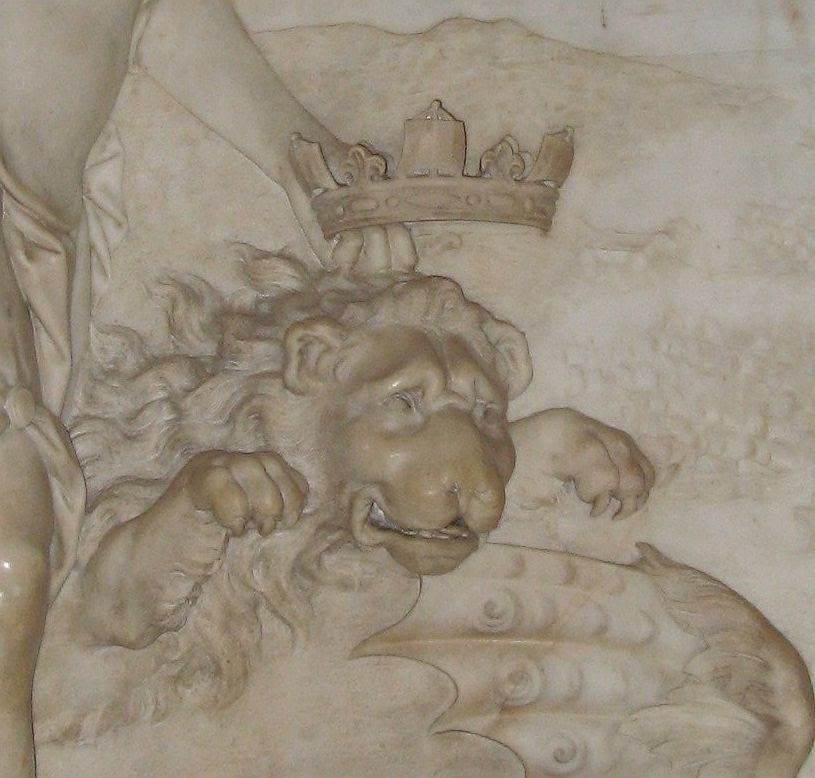
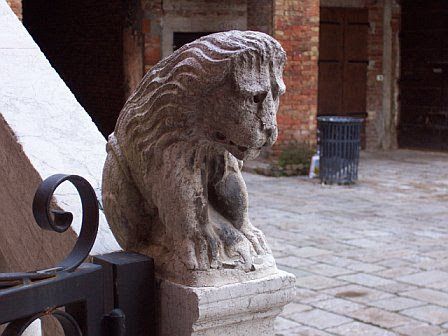
I’ve been trying for a month to find some way to write a deep and detailed update on life here these days, but I give up. What follows is the best I can do.
After a year of the virus, and its varying grip on Italy’s 20 regions and 80-some provinces, all I can say is that we are not yet out of the proverbial woods, even though vaccinations have begun. There is an “English variant” now on the scene that has upset everybody’s predictions on progress. Even without this interloper, the danger of assembramenti (gatherings of people) remains paramount, though large numbers of people I see walking around seem not to be concerned. Exhibit A: Mask worn beneath the nose. Exhibit B: Mask around neck. Any time that the restrictions on gatherings are moderately lifted, the campos and fondamente clog up again with bright sparks, glasses in hand, masks lowered or even removed. And so the restrictions clamp down again. It’s like Groundhog Day.
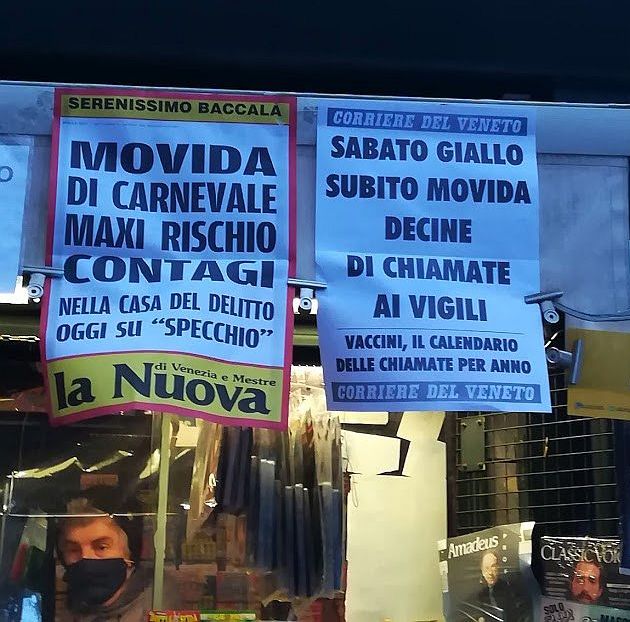
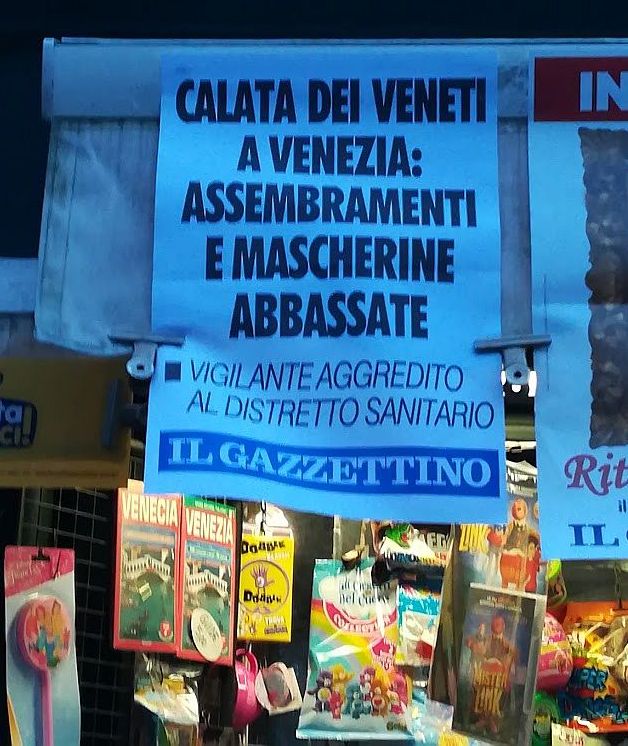
The year has been entirely color-coded, as Italy has struggled to maintain control of the contagion (and its social, economic, and medical consequences) by applying restrictions according to their level of contagion: Yellow is the least dangerous, Orange is the middle ground, Red is obviously the most dangerous (and at least one doomed region was labeled Dark Red for a while — I think that may have meant something like bomb-shelter-type quarantine).
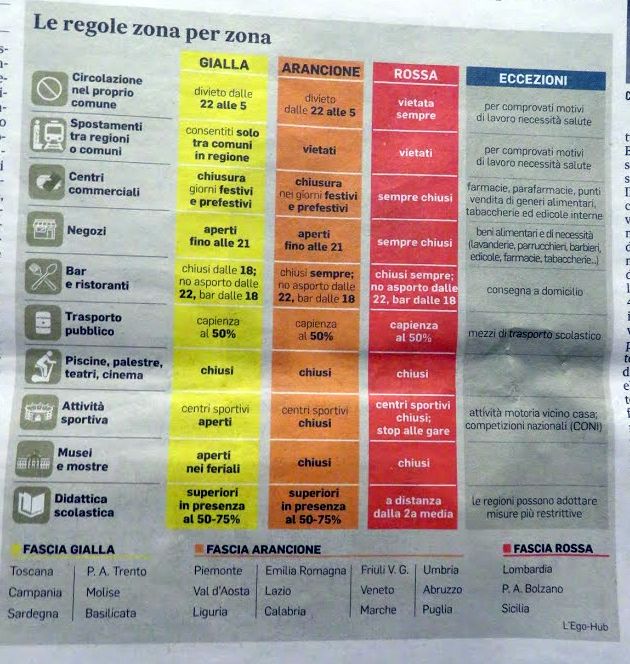
But the restrictions kept changing, reacting to the bettering or worsening of the epidemic’s numbers. We have spun through variations of life involving the hours that shops/bars/restaurants could be open (restaurants closing at 6:00 PM was obviously problematic, though takeout was the stopgap solution), to the number of persons permitted to enter a shop (from one to as many as six), to whether you would even be allowed to enter at all. Oh — and sitting at tables inside was obviously risky, and sitting at tables outside not much less risky, so as recently as last week you bought your coffee at the cafe’ doorway and stood there drinking it al fresco. Except you weren’t supposed to be standing — assembramenti! — so you had to keep moving to avoid the potentially contagious assembramenti (gatherings of people), so you wandered away with your little paper cup, sipping the rapidly cooling teaspoons of espresso, looking for a trash bin. I gave up coffee abroad because the always-dependable cafe bathrooms were no longer available.
Permission to travel between towns, provinces, and Regions continued to mutate. Schools open, schools closed. Public transport restricts the number of passengers permitted during “rush” hour (“Six people can board,” I heard the marinaio call out as we left the vaporetto), but at other times there have been vaporettos that were completely empty. Except for us, I mean. Not made up.

Some museums are beginning to reopen, though obviously with fewer visitors because cross-border travel is still generally forbidden. Venetians (or Italians) who’d like to see some of their artistic patrimony without scrimmaging through masses of tourists, this is your big chance. Most of the museums are open only Monday through Friday; the Guggenheim and Palazzo Grassi only on Thursday and Friday.
Today is Mardi Gras, but this year’s Carnival has been almost entirely online — that is, whatever remnants of the Old Celebrations they managed to retain. We did see some tourists (mainly from the Veneto) over the past few days, on and off, some of them in costume. But I can confirm that seeing a few random dressed-up people does not a Carnival make, especially when they are walking along streets in the late afternoon, where the few businesses that were open are beginning to close. Curfew for bars and restaurants is 1800 (6:00 PM) and slightly later for other enterprises. Supermarkets are open till as late as 8:30 PM.
The last weekend of Carnival did have its brighter moments, especially Sunday when the sun and the tourists combined to bring a whiff of normalcy to the city.

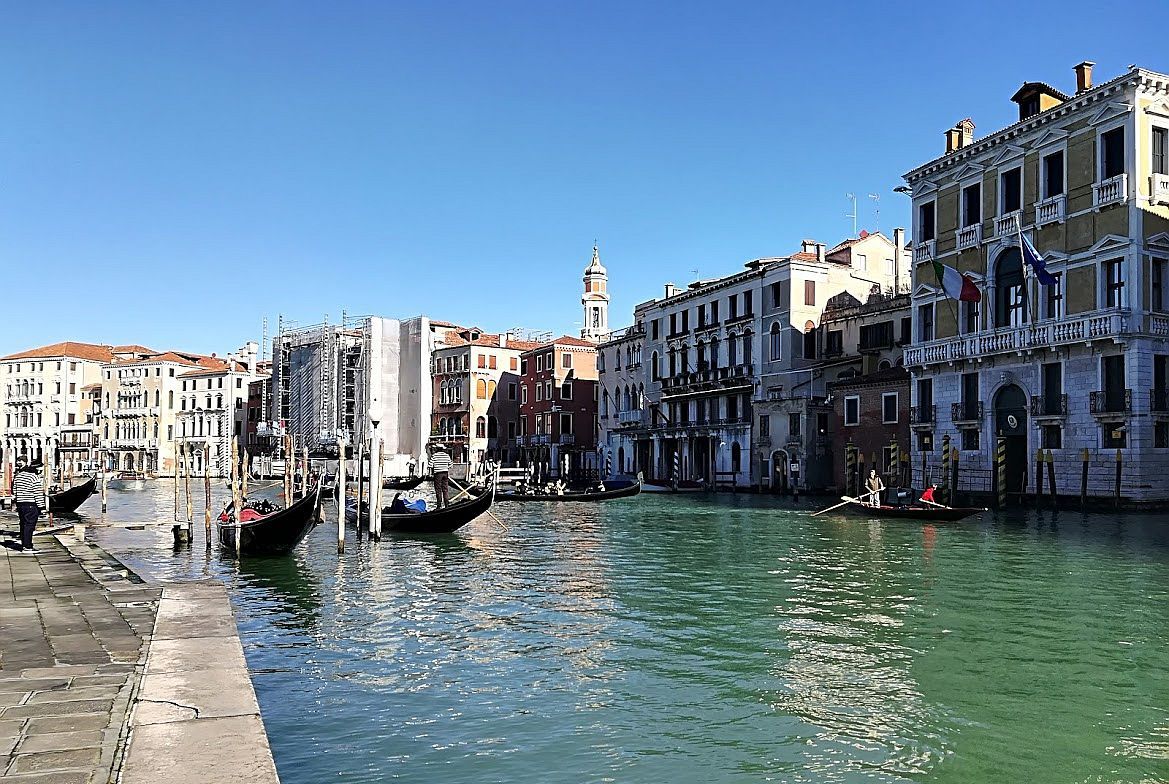

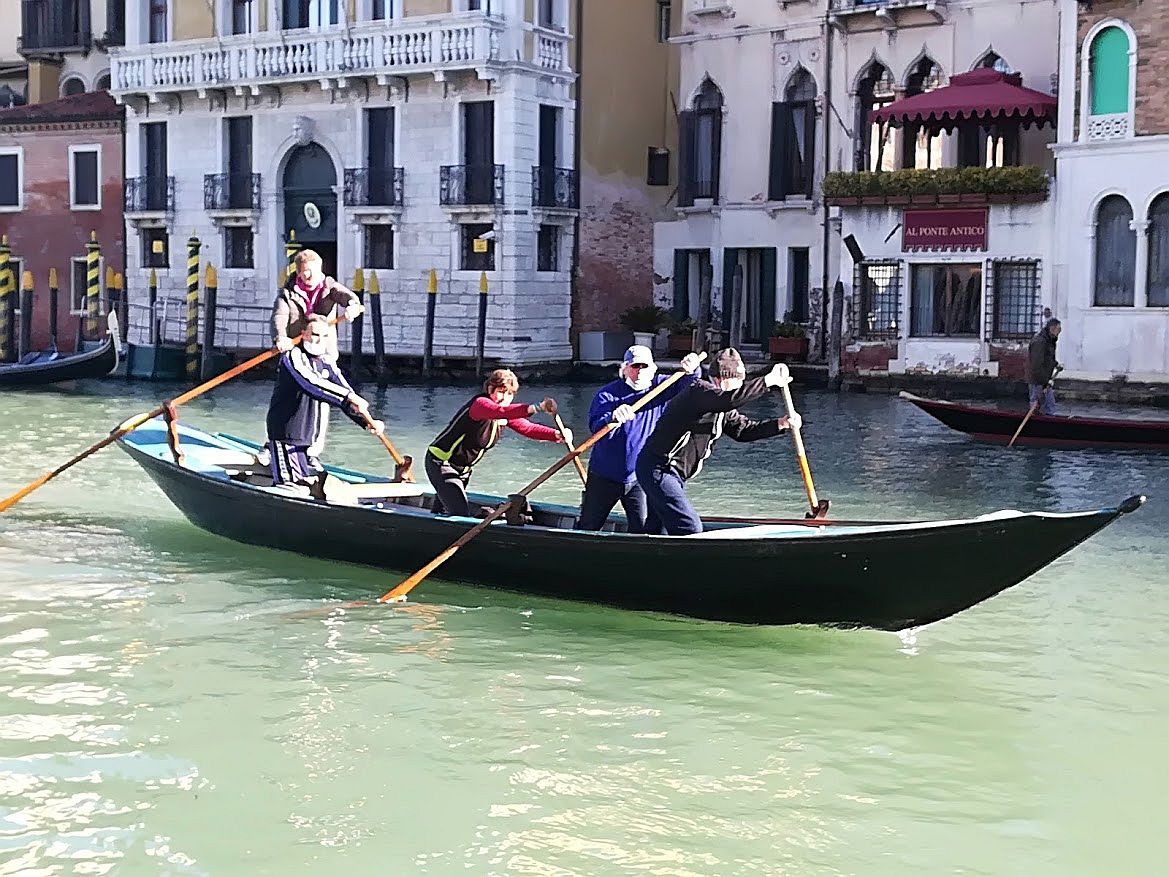

We went out for a late-afternoon walk today; there was very modest activity in via Garibaldi. Carnival barely touched the city as it drifted past, unable to land. As always, it was the children who made it happy.
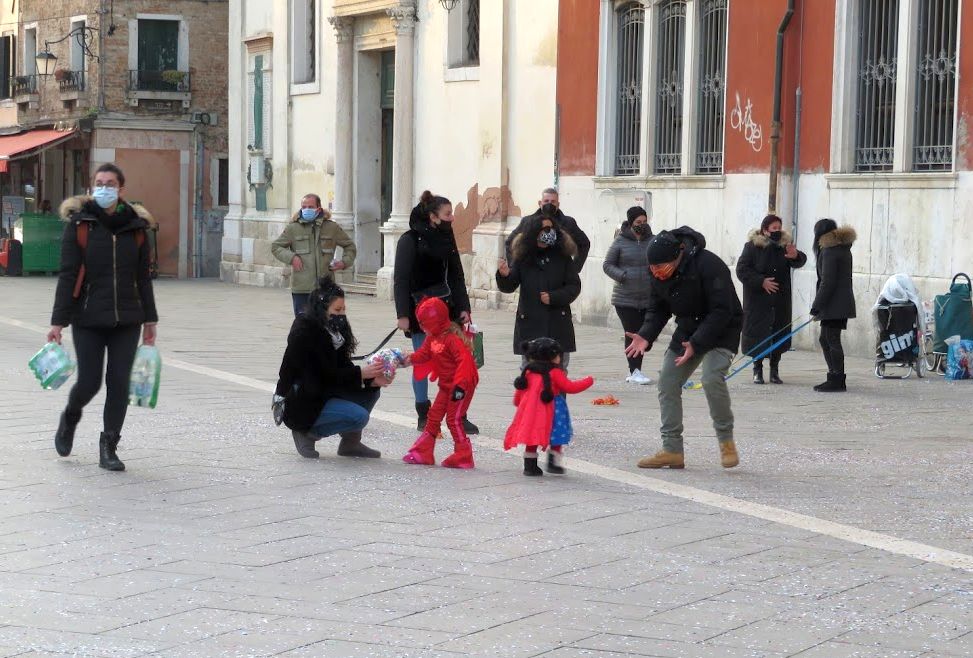
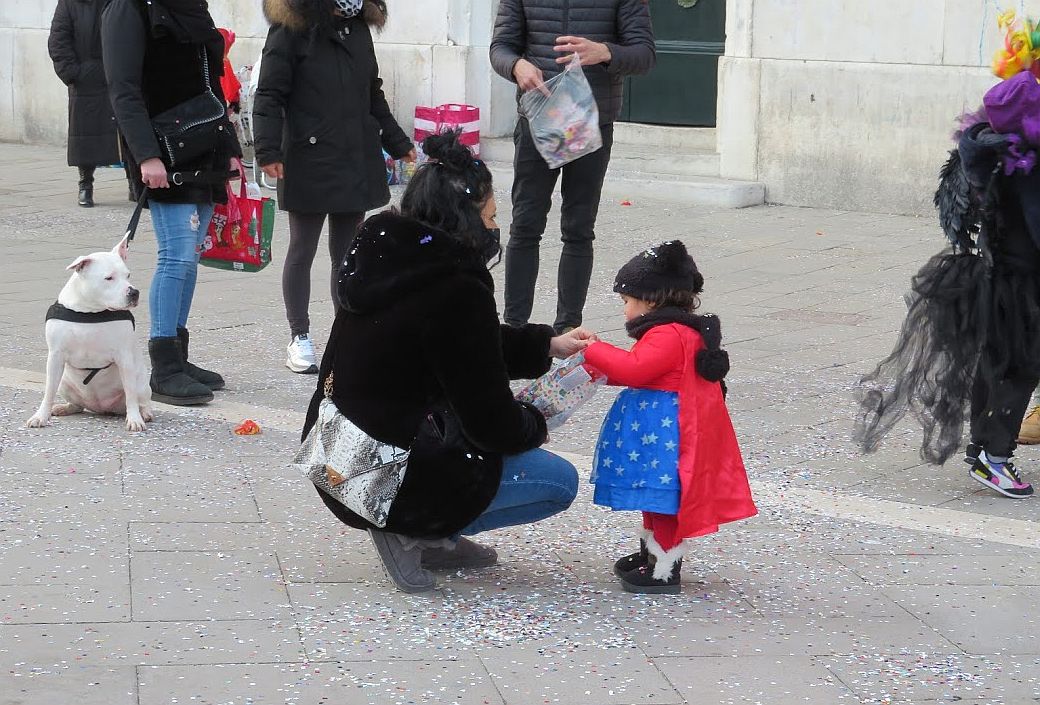
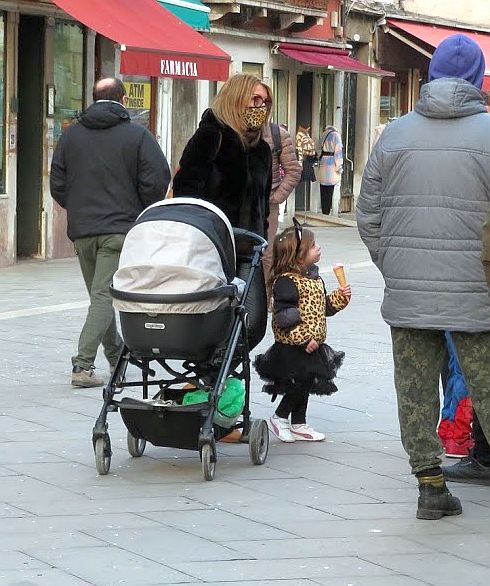
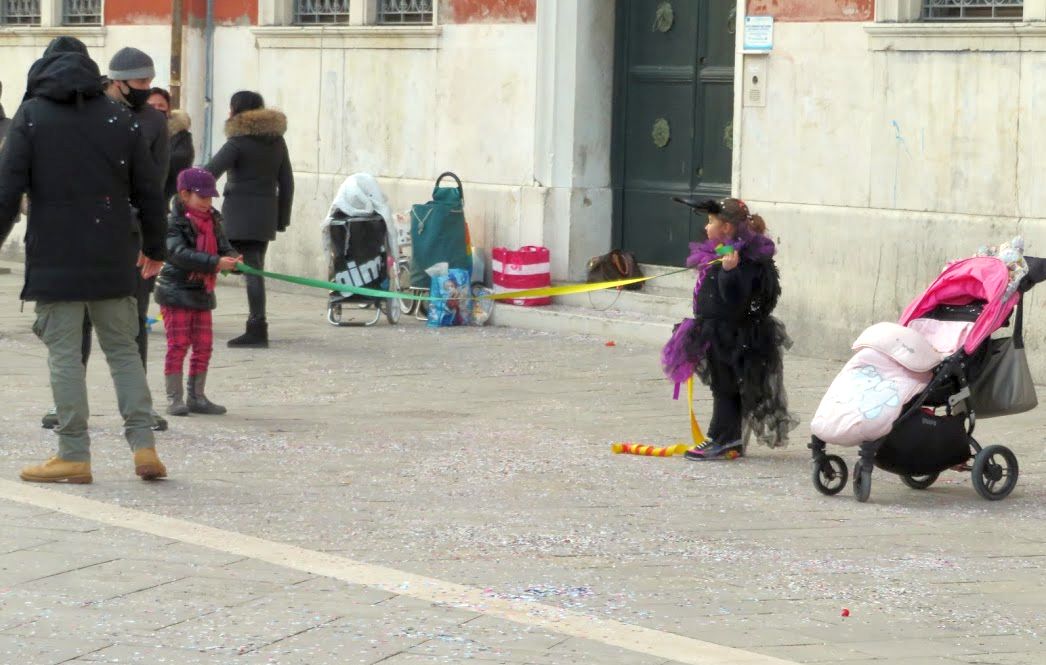
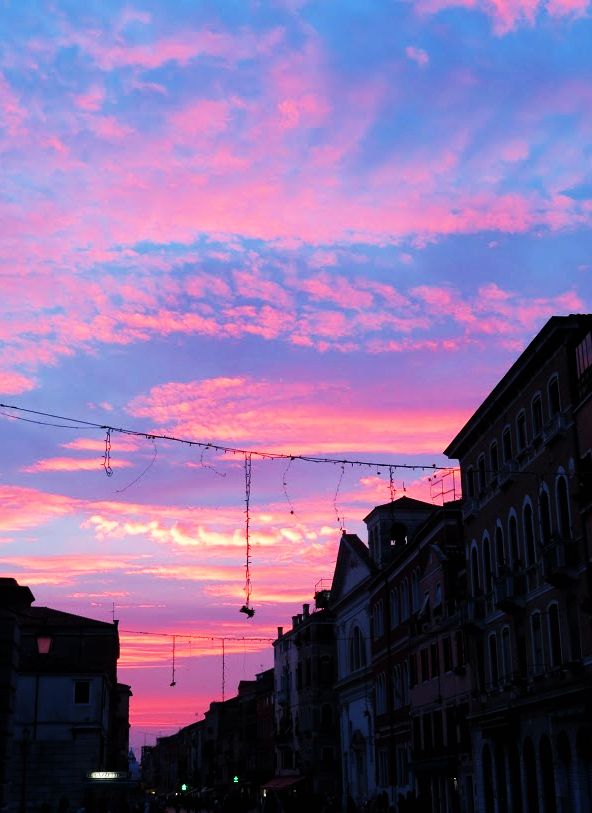

I had no intention of writing anything about the coronavirus and its current effect on Venice, but a friend passed along a comment that pushed several buttons, so to speak, so here goes.
First, about the virus: Schools are closed for the second week, masses continue to not be celebrated in any churches, sporting events are either canceled or postponed to some vague not-far-but-not-near future. I have heard some references to the city being a “ghost town,” but that may be a bit exaggerated. True, late yesterday afternoon via Garibaldi was almost empty, as was the supermarket, but then again, it was cold, dark, and raining. I could hardly justify my being outside, much less wonder about anybody else.
This morning, warmer and sunnier, saw plenty of locals out and about, at least in our neighborhood. Obviously I can’t speak about the city as a whole, but by the same token, the “ghost town” person was most likely referring to the area that he or she frequents. There weren’t many children around, which is odd, considering that they’re not in school, but I presume the parents are keeping them inside. There seemed to be less boat traffic than usual out in the bacino of San Marco, but still, our morning promenade, which went as far as the Ponte dei Greci, took us past several places where workmen were toiling away. So I can’t say that everything has ground to a halt.
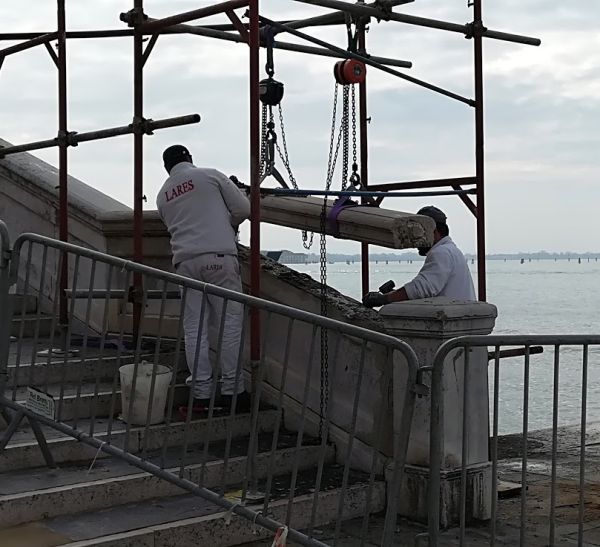
A noticeable number of restaurants and some bar/cafes are closed, but this didn’t strike me as exceptional — in fact, I might not have noticed it if we weren’t all mentally on red-alert status. The period between Carnival and Easter is always very quiet; it’s an ideal time for the owners to go on vacation, or undertake maintenance work, precisely because there are relatively few tourists. There being even fewer due to contagion concerns doesn’t mean that the virus has prostrated the city.
Yes, restaurateurs have been reported as wailing and gnashing their teeth about the drop in business. (An ordinance has imposed a three-foot distance between tables, which does make the atmosphere slightly less welcoming.) But merchants and restaurateurs are evidently born tearing their hair and yelling “Business is terrible!” I’m not saying that this is not a difficult period for them, it’s just a refrain that is so common, for one reason or another, that it has acquired echoes of wolf.
In any case, I think the ghost-town comparison may be felt more by non-residents who aren’t able to visit museums, or who see their favorite bar or pizzeria closed. Anyone who has ever come to Venice in late winter/early spring expects to find breathing room, whether it’s three feet in every direction or not.
About the buttons to which I referred in my opening statement (pushing of, effect of) — I will explain them in my next post.
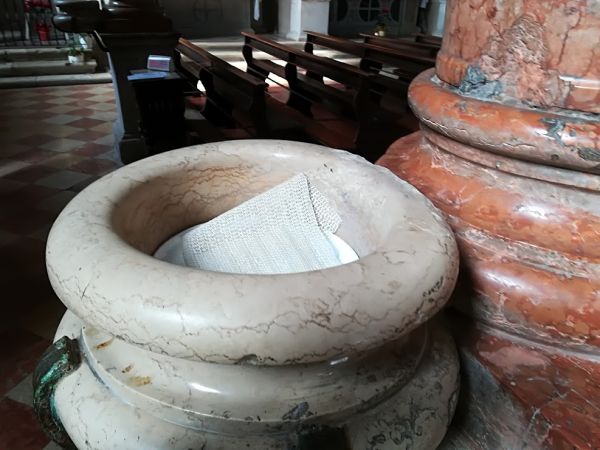
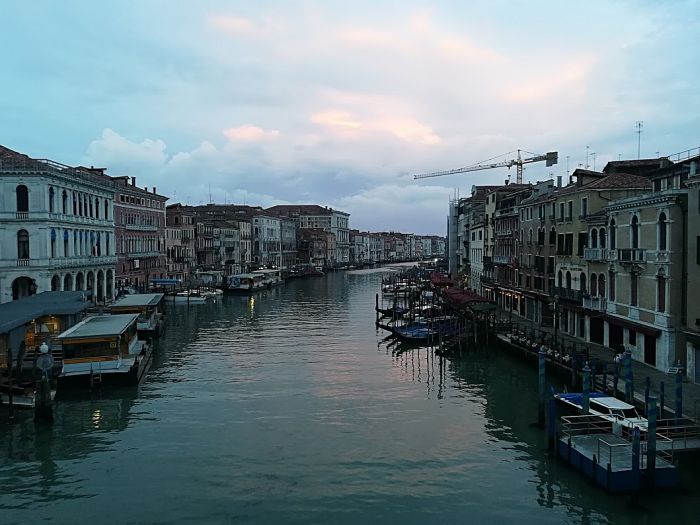
Another headline repeats what is becoming accepted wisdom: “Tourism is killing Venice, but it’s also the only key to survival.”
Apart from my inborn tendency to balk at the word “only” (in this case, is it true, or is tourism the only key you’ve come up with?), the phrase itself makes the same sense as “We had to destroy the village in order to save it.” “The operation was a success, but the patient died.” “Arsenic can kill you, but it’s the only thing we have to treat your late-stage trypanosomiasis.” Why do I keep linking tourism to death? That’s not good.
The quantity of tourists, as so many things, can be measured as “enough,” “more than enough,” and “far too much.” Sometimes these estimates are subjective (“I personally can’t find a seat anymore at my favorite cafe’, therefore there are too many people here”) to the clearly objective, like those overloaded Asian ferries that sometimes sink.
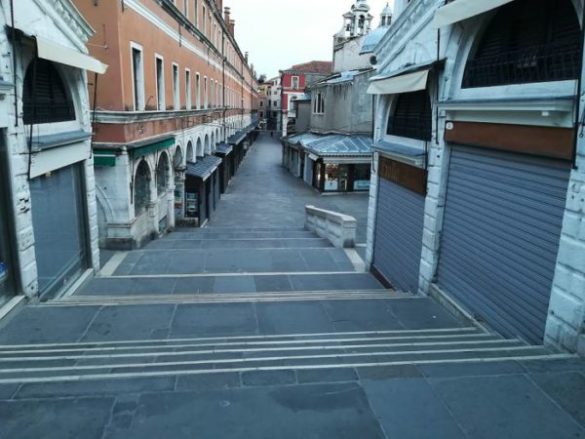
Venice’s plight is not unique. There are increasing numbers of places which are now under pressure from what once was a good thing, and they are trying different ways of managing it. Easter Island, if you’re interested, recently faced the fact that it was being subjected to a “veritable invasion of foreigners.” The 8,000 residents held a referendum and agreed to limit a tourist’s stay to 30 (as opposed to the previous 90) days, and soon will decide on a maximum number of tourists to allow at any one time, period.
Tourism to Iceland — a slightly less remote place — has increased five-fold since 2010. The population of Iceland is 332,000, and last year counted some 2,000,000 visitors. A tax is being discussed which would be applied in various ways to protect the spectacular natural environment from what amounts to six tourists for every resident.
Consider the gorgeous Croatian coastline. Rovinj, to take an example at random, has a population of 15,000; in 2017 there were 490,000 arrivals. Istria, the Croatian peninsula nearest to Italy, contains 208,000 residents; in 2017 there were 1,022,171 tourists from Germany alone.
Well, you say, when the shock has subsided, those are mostly summer destinations; obviously there’s breathing room there in the winter. And that’s true. But Venice is mostly a summer destination too.
Venice, so fragile, so small, obviously is facing its own perils, many based on chronic perplexity as to how to manage a place which has too many visitors to permit normal life, but which stubbornly insists on maintaining normal life anyway. Plans for peaceful coexistence that are hopefully suggested usually run aground on the reef of how to implement them. And there’s no way to ever make the city larger than three square miles.

Studies have shown that the sustainable limit of tourists to Venice is 19,000,000 a year. Last year 28,000,000 came, which is almost 50 percent more than the limit. The above study calculates that therefore Venice can sustain 52,000 tourists per day. We now have 77,000 per day. My own personal studies confirm that they will all be on the #1 vaporetto heading uptown on Sunday afternoon.
Speaking of vaporettos, they’re not your only option if you want to be crushed. Now the buses to Mestre in the late afternoon are reaching critical mass. So many tourists are packing the buses heading back to their much-less-expensive hotels, apartments, campgrounds, or wherever they’re staying on the mainland, that daily commuters literally can’t get on.
And if this is happening now, let me draw your attention to the several enormous hotels being built right next to the Mestre train station. Presumably their guests are going to want to go to Venice sometime, and even come back from Venice, on the already insufficient buses and probably soon-to-be-insufficient trains. Anybody is welcome to defend tourism, but I urge you once again not to say “Oh, but Venice lives on tourism” to any of the exhausted Venetians trying to get home as they watch the bus pull away without them.
The city government is struggling to find solutions to all this; it’s not like they don’t see what’s going on. The mayor recently announced that in the busiest periods he might close certain sections of the city to further entry. Something like this was tried a few months ago with “gates” at critical points, such as the Calatrava Bridge and the entrance to the Lista di Spagna, which were to slow, and redirect, the flood of arrivals heading toward San Marco from Piazzale Roma and the train station. It got mixed reviews and now the gates have been removed, though New Year’s Eve and Carnival desperation may require them to be reinstated.
Every time the topic of some form of entry tickets is raised, a thousand objections are heard. Entry is certainly easier to control at Easter Island, which is reachable only by means of a five-hour flight from Chile, but there must be at least 20 ways to get to Venice if you really want to, including, but not limited to, swimming.
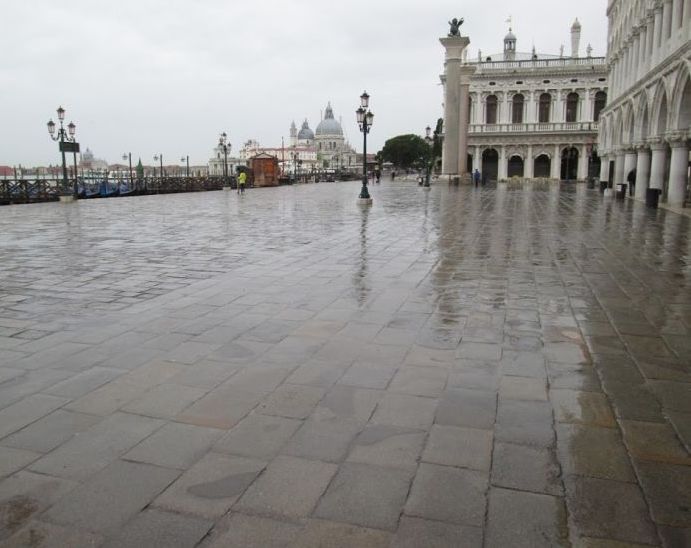
Managing crowds is an art and a science; the most striking example I know of is the reorganization of traffic in Mecca during the seven days of the annual hajj. Venice hasn’t reached the point where individuals are being trampled to death, but that was already a danger for the 2,000,000 Muslim pilgrims all trying to get to the same places together. A system has now been created to manage the flow better, so now we know it’s possible. It’s a fascinating story; here is a link to an interesting article on this amazing feat.
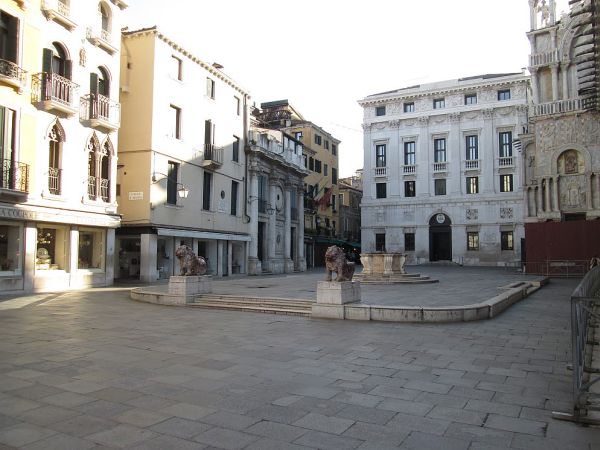
But “too many tourists” isn’t just numbers, it’s the ripple effect they have on Venetian life. I have recently noticed three effects of escalating tourism that are profound, even if not immediately perceived as such.
The first effect is the astonishing recent increase in supermarkets. A supermarket used to be a novelty, now it seems to have become a human right. There are even two, virtually side by side, on the Riva del Carbon near the Rialto Bridge.
I thought it would be interesting to find a map, or a list of the total number of supermarkets, but I didn’t and I don’t really care. They’re everywhere now. There’s the De Spar at the ex-Cinema Italia and literally two steps away is a Coop. Not literally ten steps away is a Conad, which used to be a Billa. Prix has inserted itself into all sorts of interesting corners, making it a challenge to find some of them although the lower prices make the search worthwhile, and there is a chain called Simply and something called Crai and so on.
If one knows — which one does — that the population of Venice is inexorably shrinking by about 1,500 people per year (despite a recent light touch on the brakes), it’s obvious that all these supermarkets haven’t been opening to support the few remaining locals. But when you consider the extreme increase of apartments being rented to tourists, voila’! I get it!
It’s clear that the dwindling population, including me, benefits from the supermarkets too. My point is merely that there wouldn’t be this number of emporia if locals were their only customers. Even I can understand that. But as I stand in line at the drastically expanded Coop on via Garibaldi it’s obvious that more than half of the people with me are tourists. And as I dodge their backpacks (yep, still on their backs, just like on the vaporetto) as they navigate the narrow aisles, I ask myself where the Sam Hill they all came from. I don’t mean what countries, I mean why are they all here now when five years ago there were so few? It’s like there’s a factory somewhere on a dark side street that’s manufacturing tourists.
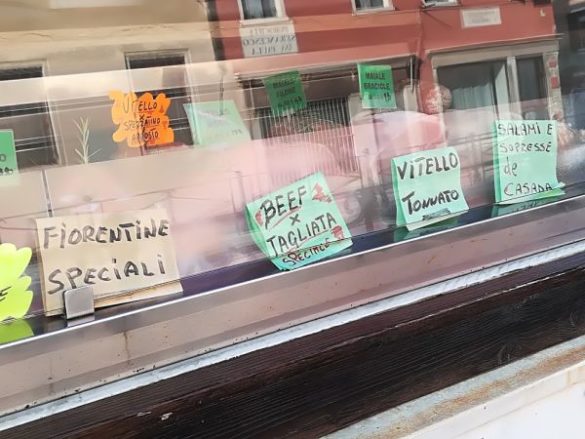
The second effect is the astronomical increase in apartments for short-term tourist rentals. By now this is not a new theme, but as I have often observed, you can hate AirBnb all you want (and it is far from the only outfit in this business), but if apartments are constantly being added to the supply available to tourists (and tourists respond by renting them, of course), why are these apartments being offered? To make money, naturally. And who is offering them? The Venetian landlords, naturally. While everyone is excoriating tourists for killing Venice, one should recognize who is handing them the ammunition. The shots, so to speak, are coming from inside the house.
One starts with the fact that there is very little space for locals to rent. The available space, which is increasing, is now primarily offered only to tourists. Some years ago, when Lino and I were requested to vacate the apartment we had rented for ten years, the landlady said she needed it for her cousin, or somebody, moving to Venice from Sicily, or somewhere. Any excuse will do, because of course she planned to rent it to students, which she did, demanding four times the rent we paid. Not made up.
But let that go. When we went looking for another rental somewhere — we weren’t fussy — no agency would talk to us because Lino’s Venetian (hence, theoretically impossible to dislodge). My being a foreigner was fine, as far as that went, but the point is that we weren’t in a position to pay the tourist-rental rates of — I think one agent said — 1,000 euros per week.
We managed, in the end, to buy our little hovel (we gave up on the rental idea), but we could manage. Yet there are extremely aged Venetians (a retired 90-year-old professor, in one case) who are being summarily evicted by their landlords because the apartment, which has now become a four-wall gold mine, is wanted for tourist rentals. The landlord says “I want my apartment back,” and a person who has been living in the place for 50 or 60 years is out on the street. There is no recourse. I am not making any of this up. A friend of mine told me a similar story of an elderly person in her building, “And the landlord is renting two other apartments already.”
This often-tragic upheaval is a clear response to the sheer quantity of tourists, but fingers in the press are pointed at the tourists. Why? As Lino puts it: “Who is forcing the Venetians to leave? The Venetians!” Therefore, if you look around and all you see is tourists, there are reasons.
A group called Occupy Venice has come forth with the goal of re-appropriating empty apartments (that is, those whose fate has not yet been sealed by tourism). A friend has sent an article which you can peruse.
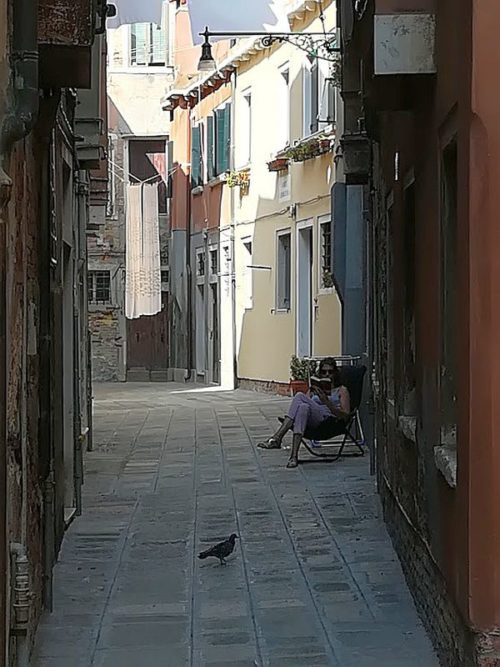
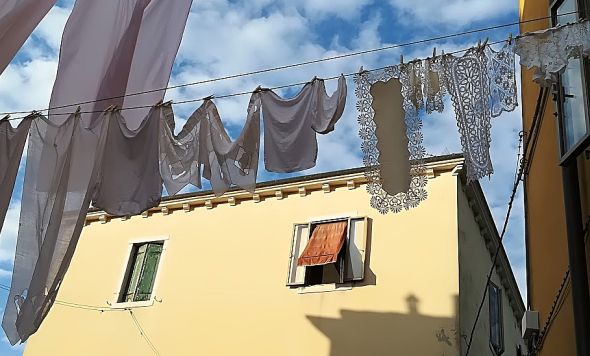
The third sign of increased tourism may not matter to anybody but me, so you can skip the next few paragraphs if you want.
I saw it on the day of the Regata Storica. This event focuses on four races which gloriously but inconveniently occupy the Bacino of San Marco and the Grand Canal for a total of three hours in the afternoon. This deranges the vaporetto routes, of course, and this year it was decided (one always wonders by whom) that this derangement was no longer acceptable. Therefore, for the first time in at least 100 years, the traditional “boa” in front of the train station was moved further downstream to just before the Cannaregio Canal.
“So what?” you ask. The “boa” is a temporary object which the racers turn around in order to head back down the Grand Canal toward the finish line. Tradition has always placed it in front of the train station, where there’s plenty of room for the boats to maneuver and plenty of room on the piazza in front of the station from which tourists can watch this usually dramatic moment. Win-win for everybody?
Of course not, because now there are enough tourists (or even some locals, I guess) who don’t care about the races and who are inconvenienced by not having vaporetto service from Piazzale Roma up the Cannaregio Canal during those few hours. One might regard the Regata Storica as the city’s festival, but no longer does the entire city celebrate.
Therefore moving the boa enabled the vaporettos to continue to navigate the upper reaches of the Grand Canal, unhindered by those pesky races. So another intangible, but no less real or important, piece of Venetian life has just been distorted (I didn’t want to say “eliminated,” but eliminated) for the benefit of I actually do not know whom. Because for many decades this temporary interruption of service didn’t create insurmountable problems for anyone. Does this change mean that now the number of “anyone” has superseded the number of those who want to see the Regata? Evidently yes.
The newspaper chronicles the craziness of the tourists, but crazier things keep happening below the proverbial radar. As in the case of the Fondaco, it’s the people in offices who actually have the destiny of the city in hand, and it will be a cold day in the Inferno when any regular Venetians might be consulted on the matter. But why consult them? Before long they’re all going to be dead. So bring on the tourists!
We need to move out of this dark tunnel now; I have a happy story to tell you.

A few days ago Lino and I were on the vaporetto going down the Grand Canal; it was late afternoon, that delectable moment in which you feel the heat of the day almost imperceptibly begin to subside and the faintest zephyr of coolness sweep over your sticky skin.
There were seats along each side of the boat’s bow, and everybody wants to sit there, of course: the view, the breeze, the general feeling of being the figurehead of the ship. The four forward-most seats on our side were occupied by a family, with the boy and his father on the left, the girl and her mother on the right. They weren’t talking much, mostly just relaxing and looking at the incomparable panorama as we trundled along. Tourists, of course, but calm, coherent tourists, acting like normal people.
As we passed the Customs House Point, where the Bacino of San Marco opens up to splendor on every side, the man reached across and touched his wife. She looked back and took his outstretched hand, and they silently squeezed, and smiled, gazing out at the glory.
Watching this, everything fell back into perspective and I was suddenly glad they were here. They weren’t just another four tourists, they were people who saw the beauty, and they were happy. It seemed that so many thoughts and emotions were being exchanged in that instant and I unexpectedly could imagine myself in their place, and I remembered how Venice made me feel the first time I came here, and I wanted that for everybody.
If all those too-many people who came to Venice could feel what they felt, then maybe we could find another word for them and stop calling them TOURISTS.
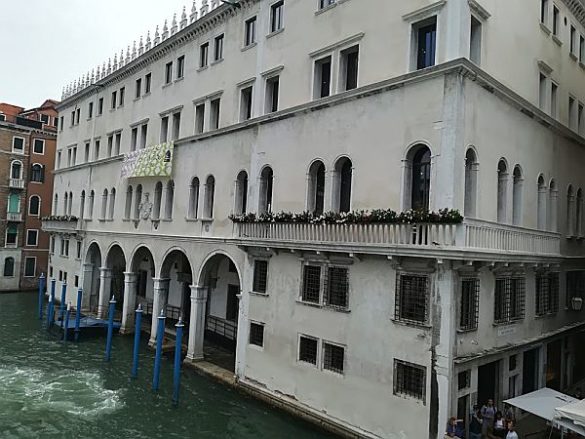
I’ve always had an aversion to the word “lifestyle,” not because I don’t believe that lives can have style, but because I do believe that it isn’t something you can buy. Somebody will say “Oh but you can buy the components,” so fine — but you can’t buy the result. There is a difference between style and stuff.
What brought this on? Assorted publicity distributed around the city for the Fondaco dei Tedeschi, which once was a palace, then became a fontego, which was a designated place in which the Venetian government required foreign merchants to deposit their goods, and which also could comprise bedrooms, counting and meeting rooms, and other conveniences. (The Turkish fontego contained a mosque and a hammam.) At some point in the 20th century it became the main post office.
I remember that phase — the palace seemed impressively maladapted to being a main post office, with lots of small rooms and way too many stairs. But I liked it. I liked going into a majestic, dusty, rumpsprung palace to buy stamps or deal with packages. The fontego seemed still connected in some way to its past. It was a piece of Venice.
Then it was closed for several years while undergoing vast and spectacular alterations under the world-famous hand of rockstar architect Rem Koolhaas on behalf of the Benetton Group. This project transformed the building into a — well, I would have called it a shopping center, somebody else might have called it a souk, but they decided to call it “A lifestyle department store.”
Department store — how quaint. I didn’t know people still used that term. But Venice already had one: COIN, the immemorial high-class department store that was forced to close last month because the building owner raised the annual rent to just beyond reach. The owner wanted 3,000,000 euros a year, while the longstanding lessee could only offer 2,100,000. So for 900,000 euros difference per year, the store has closed.
Now that I think about it, COIN was just over the bridge from the Fondaco. I don’t suppose that means anything.
Anyway, maybe you’re thinking: “This is great! Finally there will be high-class stores in Venice where we can go to shop! Because Prada and Gucci and Tiffany don’t have their own stores right out there on the street!” (Of course they do. It’s just that they’re not all jammed together and linked by escalators.)

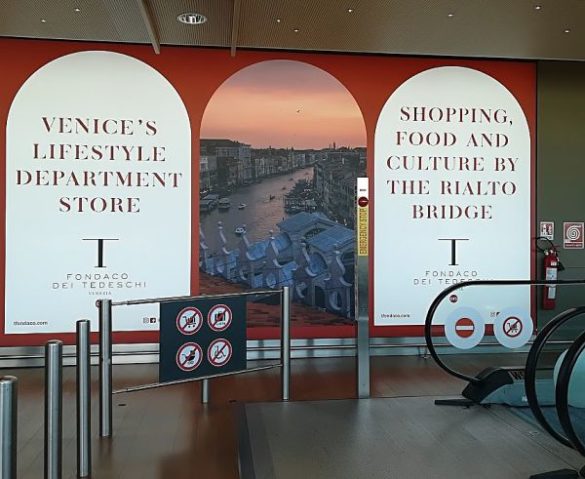
Posters for the Fondaco have been on the vaporetto docks for a few weeks now, and I recently discovered even fancier publicity for it in the airport. This makes sense, because the fondaco is totally geared to tourists. I seem to recall reading, during the renovation phase, that specific tours were going to be organized to visit it, like Mall of America. Water taxis would bring customers in big batches to the water entrance, let the customers roam and spend and take pictures, then take them away again.
Whether or not that particular scheme has worked out, there are indeed many, many people who go there every day to roam and spend and take pictures. Or take pictures, anyway. And that ought to be making the owner/manager happy. But he wants more.
He wants Venetians.
Headline in the Gazzettino: “Fontego has 8,000 visitors a day, but ‘We wish Venetians would come to shop.'” Why? Aren’t 8,000 people a day enough? Any Venetian reading this would hear “Please come to our extremely upscale multilevel shopping mall full of thousands of strangers to look at useless things that cost too much.”
I don’t suppose you’d call a cashmere sweater useless, but your average Venetian who needs a really good sweater doesn’t think of going somewhere that has 8,000 visitors a day when he or she can just as easily go to the Duca d’Aosta and also have air to breathe. If he or she wanted to see 8,000 foreigners crammed together, wandering aimlessly, taking pictures, he or she could just as easily go to the Piazza San Marco, which doesn’t cost anything.
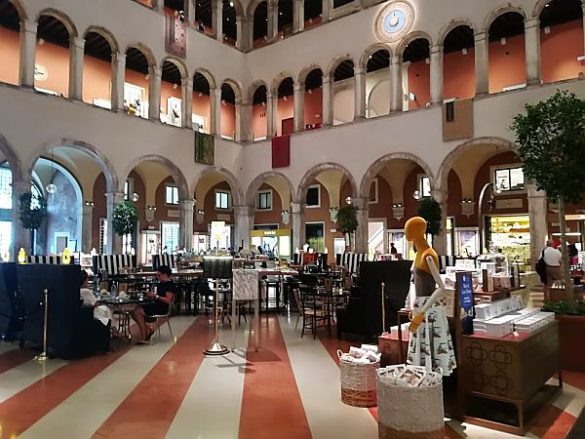
A small further point, which has not occurred to the “We want Venetians” gentleman, is: Who are these Venetians? As in happening in a number of Italian cities, Venice’s population is aging, and living on a pension is a situation that doesn’t leave much room for frippery. Certainly there are some people with pensions paid in gold doubloons, but the largest percentage of the retired people here are living on 1,000 euros or so a month; Lino’s cousin has 750 euros a month, and many others are somehow surviving on 500 euros a month. You can understand that Murano glass and Carnival masks and custom-concocted perfumes are nowhere to be found on their shopping lists.
So the Venetian visitors that are so earnestly desired and dreamed of can’t be pensioners. They probably aren’t working couples, either, because work. Children, maybe? Well, they’d have to come with some adult — could be a grandparent or aunt or uncle — but the adult would need to have money, so we’re back to pensioners.
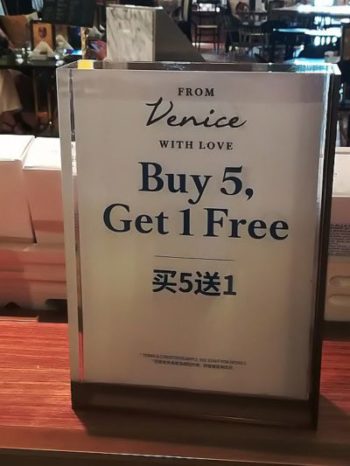
There is another element to the general Venetian aversion to stopping by the Fondaco, and it’s not financial. It’s cultural and emotional. Does the word “dispossessed” mean something? It means “It was ours, and now it’s not,” and this now applies to many historic places that have been transformed (often by Benetton, but not always) under the pretext of being saved from ruin when they are essentially large commercial speculations. I suspect that the person who said that he wishes Venetians would come to shop secretly knows that Venetians are never going to do it, and he knows why. Because it was theirs, and now it’s not.

Is tourism to blame? I suppose so. But as long as non-Venetians keep ranting about the dire effects on local life of renting apartments to tourists, the reality of foreign commercial interventions on a massive scale goes unremarked. Big opening-day articles analyzing the architectural skill of the Fondaco transformation sidestepped the fundamental reality that another exceptional piece of Venetian history had been surgically removed from the city’s battered body.
As anyone can say who has been in, or witnessed, an abusive relationship, there are some similarities between the Venetian government and its relationship with the city’s history and its present, not to mention future, if there is one. But the primary point that strikes me (sorry) is that an abused person tends, always hopefully, to see each episode of damage as somehow excusable, and this only leads to more, and finally the victim loses the big picture and sinks into apathy, helplessness and depression. It seems to me that many Venetians have reached this point.
So I would suggest to the owner/manager not to press the point of how tempting and wondrous the Fondaco is. Believe me: If Venetians had wanted to, they already would have come. You’re going to have to be satisfied just harvesting tourists who are seeking a lifestyle.
